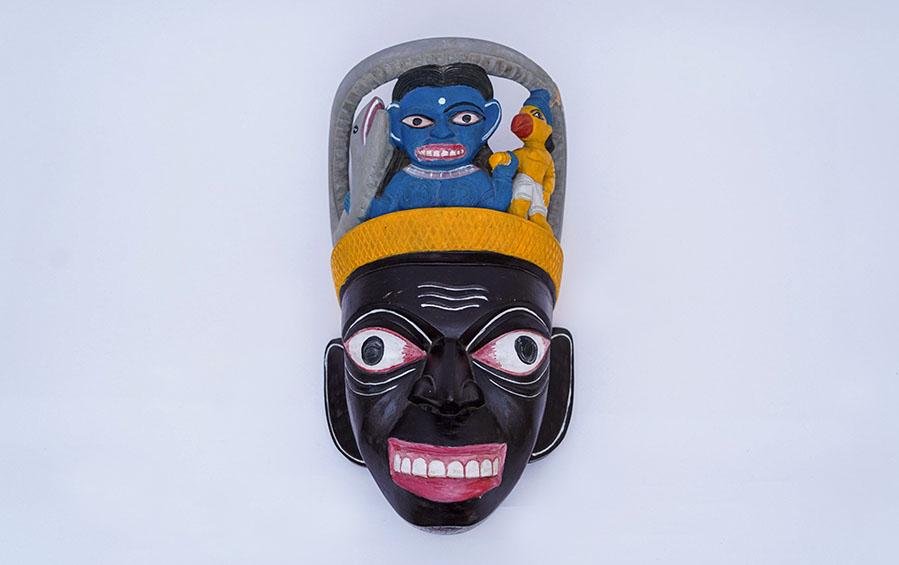Black Ravana Wooden Mask
This is a mask of Ravana and it depicts the fighting story of Jatayu and Ravana when Ravana was on his way to Lanka after kidnapping Sita. The story is one of the significant part of the Indian epic Ramayana. The black colour of the mask signifies the antagonist character of Ravana.
The wooden masks of Kushmandi in Dakshin Dinajpur district of West Bengal have inspired from animistic practices of the Rajbongshi community of the area. The masks are used by the villages either during the dance performance ˜Gomira" or as an offering to the village deity in order to usher good forces and fend for the evil. Gomira dance is also known as "Mukha Khel"- which perhaps derives from what one master mask maker explains as... "We give fear a face and then play with it to overcome that fear."
Locally available wood such as Gamar trees, Mango trees are used to make these masks. Wood pieces are kept submerged in large reservoirs containing water mixed with mulberry gum powder, bleaching powder and sal; the pieces are taken out after a week and sun-dried. The basic form emerges first with the use of the adze, followed by emphasis on facial features. Gomira masks were painted with natural dyes.
It has a hook on the back for hanging.
This hand-crafted Ardhanarishwara wooden mask could be one of the most exotic items you own.

